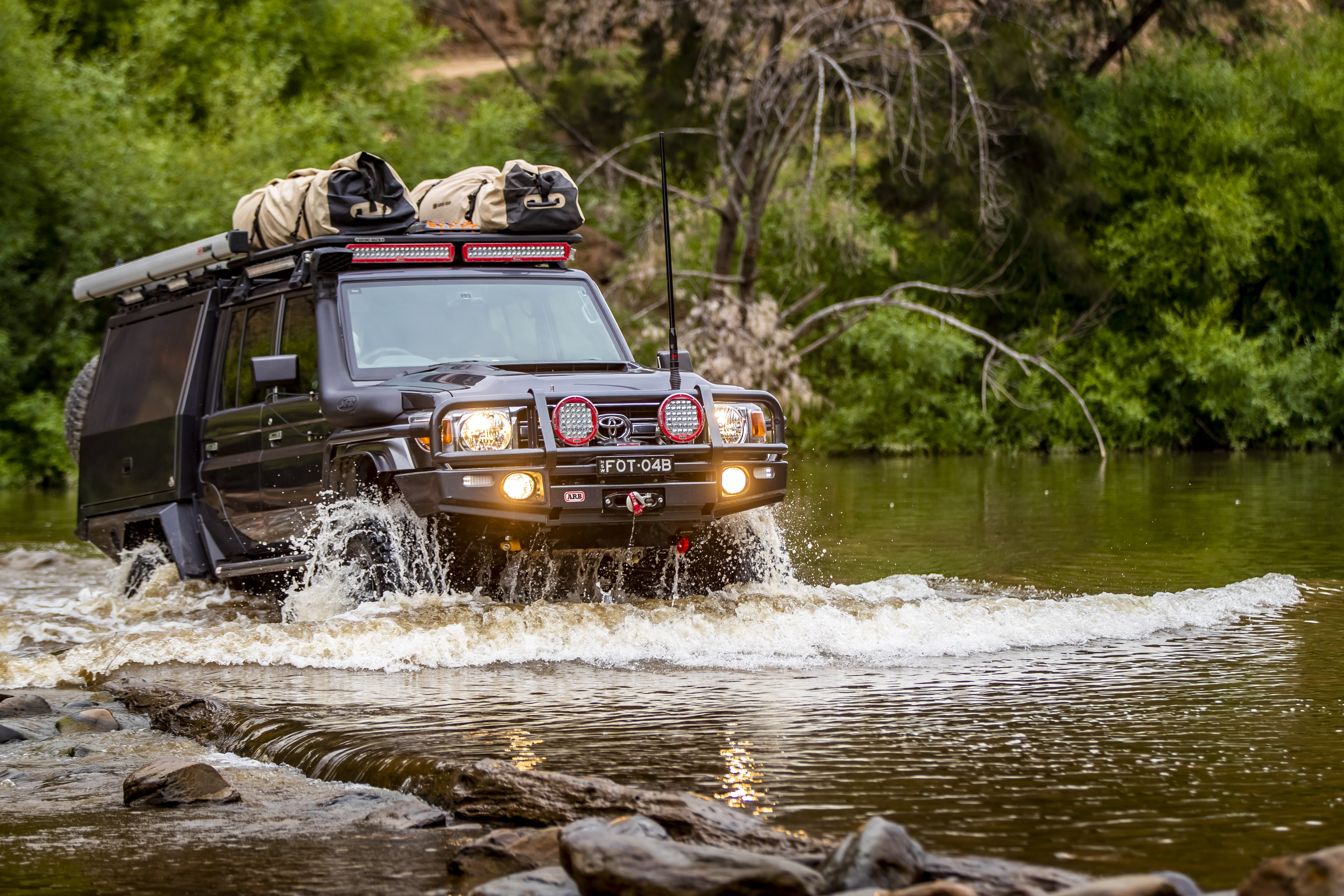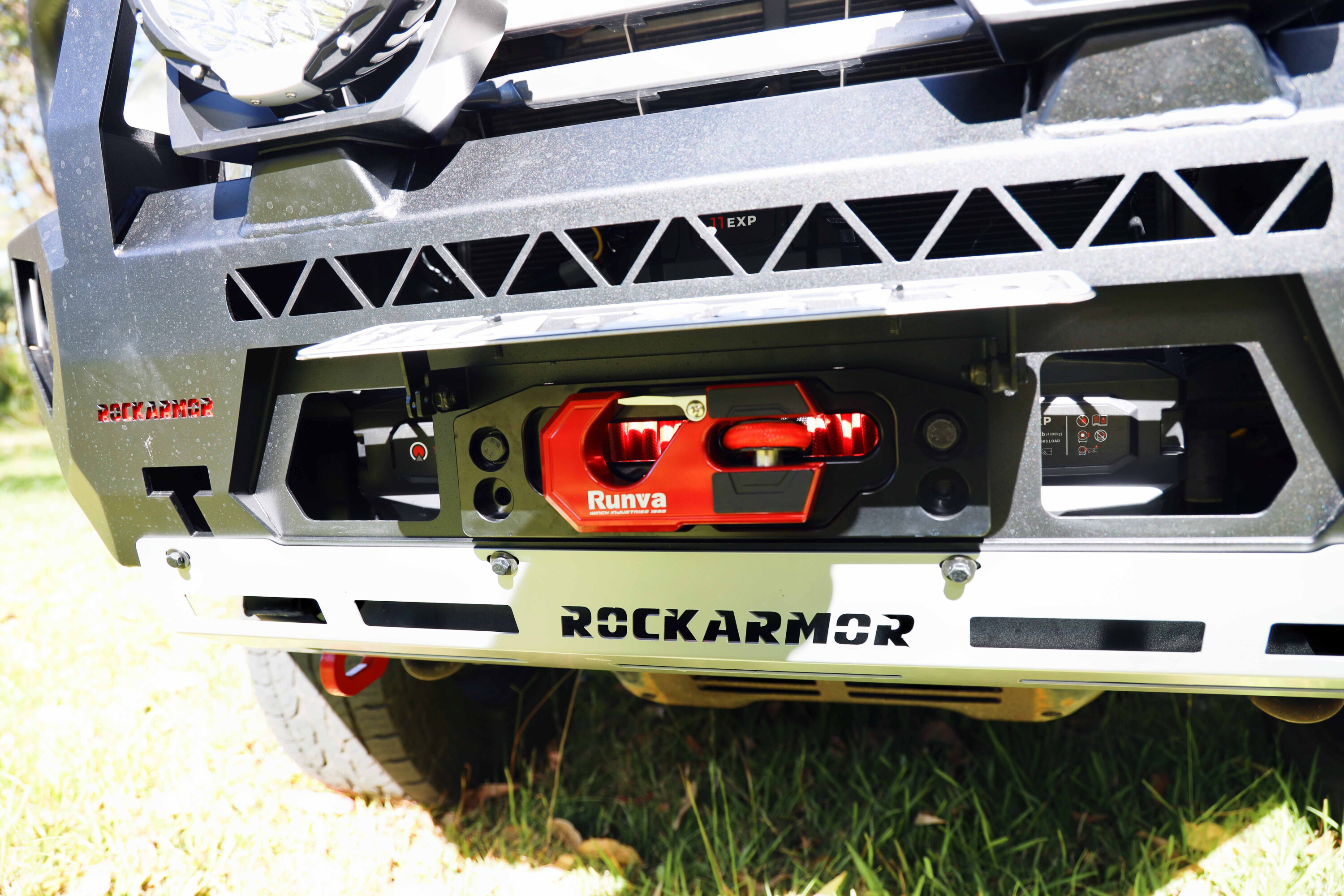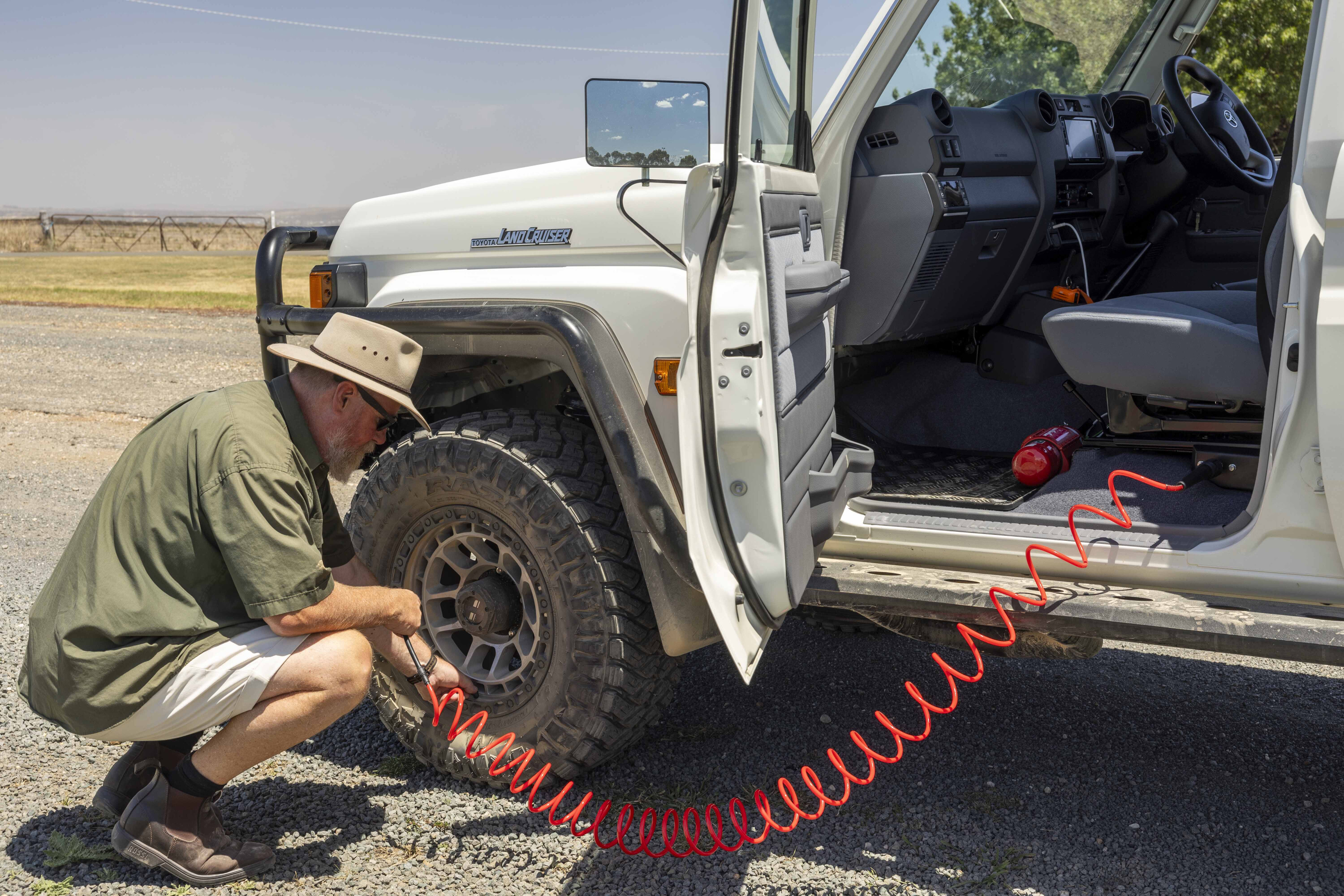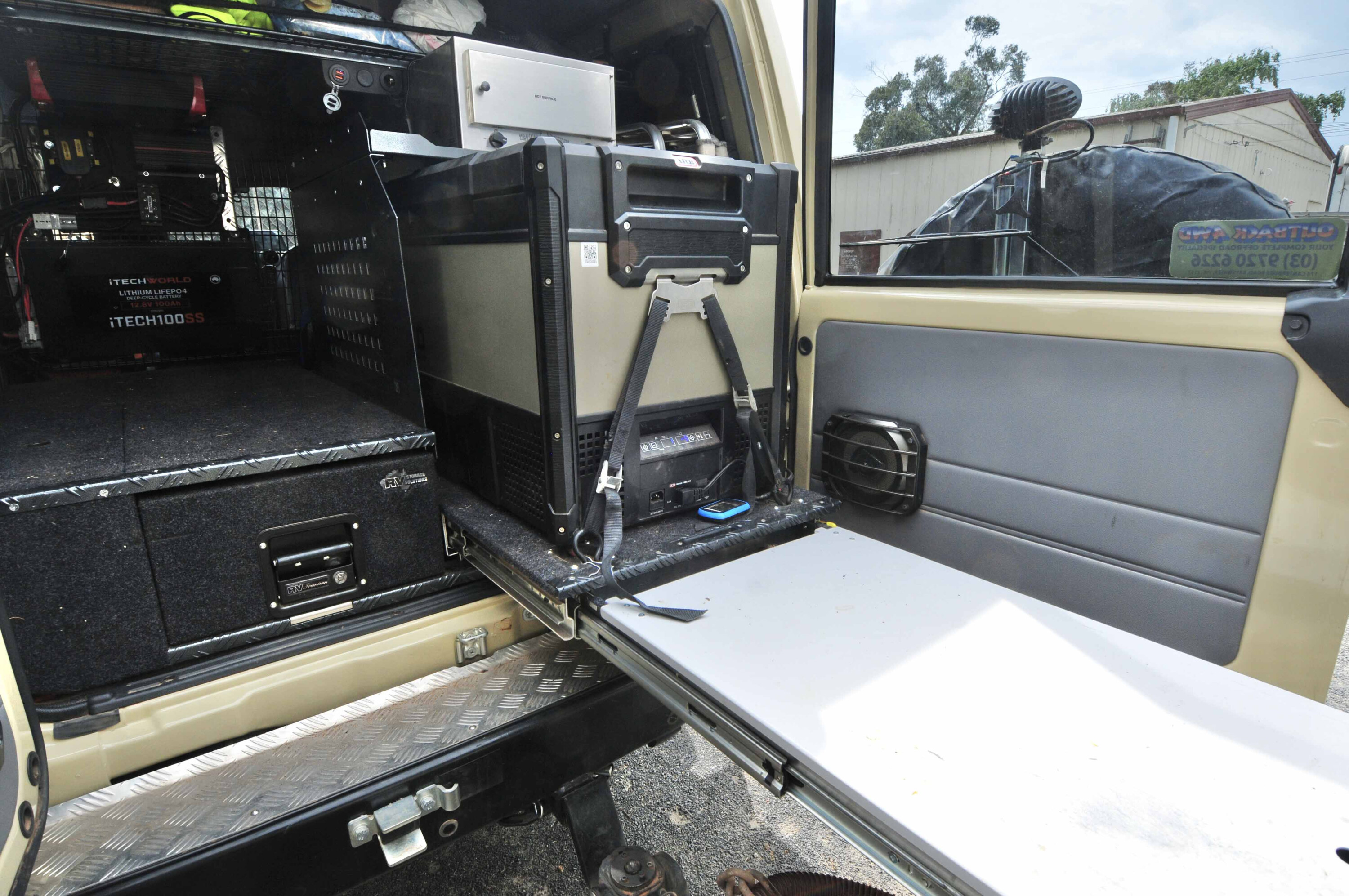Water crossings are about the only off-road driving scenario where you actually want to be left high and dry, and in this instalment of 4X4 Australia’s How To Off-Road Driving series we’re going to take you through the steps to ensure you and your rig make it safely across to the other side.
Tackling your first deep water crossing can be one of the most intimidating off-road driving experiences you will ever face. After all, how many failed water crossings have you seen on social media, or even on the TV news, where vehicles have become stuck halfway across a flooded causeway or, even worse, are washed downstream.
The first things you need to know about water crossings is when it’s okay to drive across them and when it is not, and that will depend on several factors including the depth of the water, the speed at which the water is flowing, the state of the terrain beneath the water’s surface, the type and capability of vehicle you’re driving, and what equipment your vehicle is armed with.
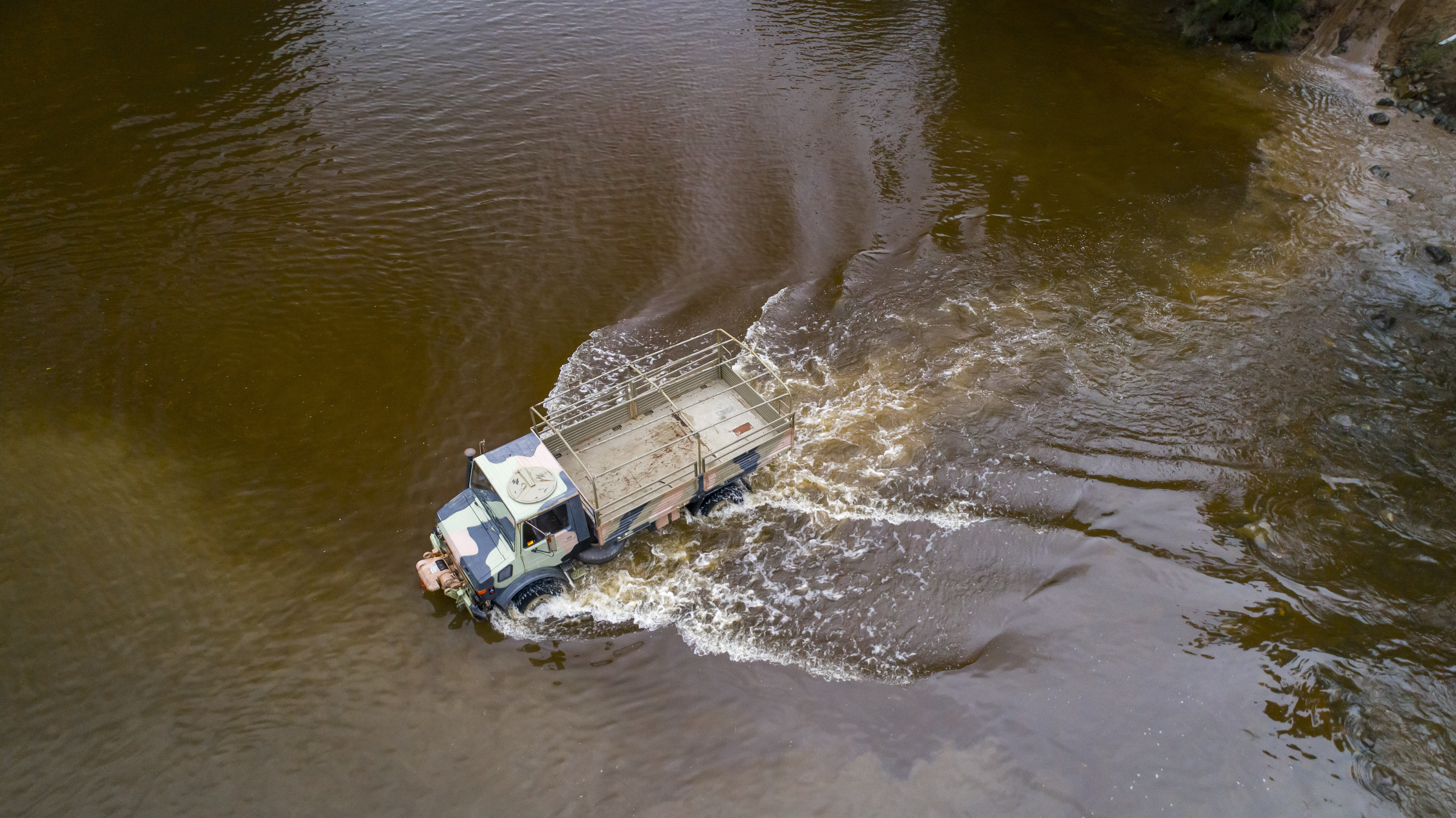
But first, a confession: over three decades of testing a huge number of four-wheel drives in differing terrain all over the world, I have performed countless successful water crossings; but a couple of years ago I managed to bugger one up big time.
By not heeding my own advice, I found myself stranded in the middle of a creek with a stalled engine that would not fire and nothing but a Tirfor to get me out of the drink. I made several mistakes that day, but the good news is we can all learn from them, so here goes …
Types of water crossings
It doesn’t matter where you drive your 4WD, sooner or later you are going to be faced with the prospect of having to tackle a water crossing, whether it be a crystal-clear high-country stream, a brackish waterflow on a coastal beach, or a murky brown river in desert country.
Depending on the water crossing, there are slightly different techniques to safely get across to the other side, which we’ll get to later, but regardless of the type of crossing, the first thing you should ask yourself: “Is driving through this water really necessary?” If there’s an alternative route that isn’t too far out of the way, then a bit of added time to the trip and some minor inconvenience is better than getting stuck up the proverbial creek.
Of course, there will likely be times that you have no alternative other than to drive through a water crossing, in which case you will need to know what you are up against before you dive in.
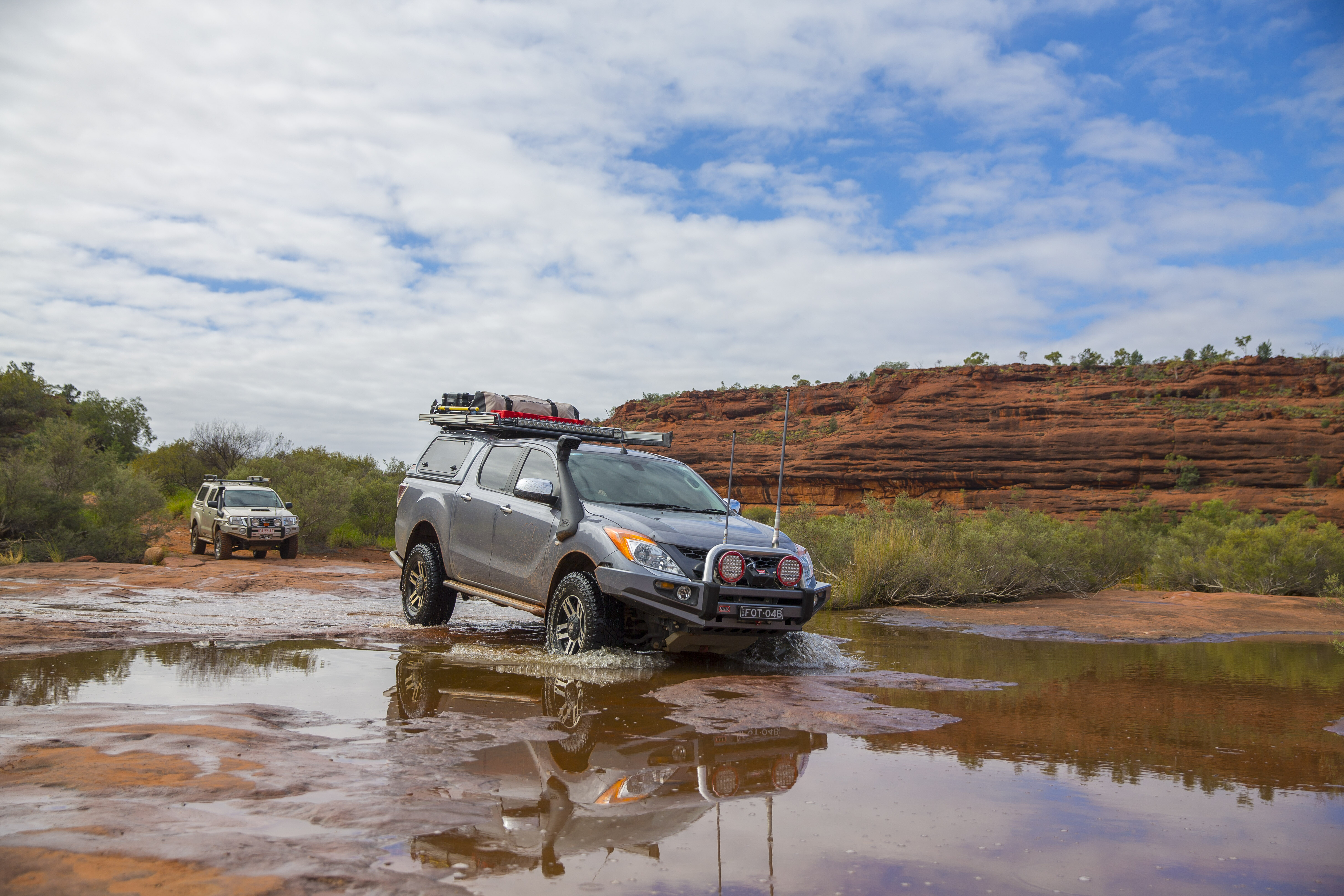
High Country creeks and streams can be deep and fast-flowing, and the terrain beneath the surface will usually consist of river stones and boulders, with potential obstacles including tree trunks, branches and deep holes. All of these can cause your vehicle to become stuck, and they can all cause damage.
Water crossings on coastal beaches are usually caused by water flowing from beyond the dunes and into the sea, but close to the waterline the direction of flow will depend on whether the tide is coming in or going out. As a result, the water will be brackish, a combination of fresh inland water mixing with sea water. The edges of these crossings can be like vertical steps, so take care when entering and exiting.
Murky brown rivers in desert country will have a sandy or muddy base, and in the case of the latter can suck your vehicle in and not want to let go, so you’ll need to use all the traction aids at your disposal and keep momentum up to get to the other side.
Essential gear for water crossings
| Snorkel |
| Diff breather extensionsu00a0 |
| Radiator blind (car bra) |
| Rated recovery points |
| Shackles and recovery straps |
| Winch |
| WD-40 (or similar) |
| UHF radios |
Stop and study
The first thing to do when confronted with any unfamiliar water crossing is to stop and take a good look. Secure your vehicle, get out and examine the water crossing ahead of you.
If the water is clear and you can gauge that it’s not too deep, that the water isn’t flowing too fast, and you can see a clear route that will avoid any potential obstacles such as rocks, logs or deep holes, you might be able to get back in your vehicle and drive across.
Before you do this, however, take a good look at the entry and exit points to make sure there are no steep drop-offs that you could get hooked up on, or deep and muddy ruts that could see you scrabbling for traction when trying to drive out.

If you can’t judge the depth of the water from the bank, and you really need to get across to the other side, it’s always best to walk the crossing first, but make sure it is safe to do this before stepping in, because you don’t want to be washed downstream if you lose your footing in fast-moving water, or get gobbled up by a saltie if you’re driving through croc country.
When walking the crossing you will be able to gather a lot more information than just the depth and rate of the water flow. You will be able to feel around with your feet to determine if the crossing has a rocky or muddy base, and you will be able to feel if there are any unseen obstacles and where any deep sections might be.
Having footwear that can get wet is a good idea, because going barefoot can be painful and potentially dangerous. And wearing polarised sunnies can help you to see what lurks beneath the surface, so if you don’t normally wear them, it’s a good idea to store a pair of these in your vehicle.
If you can easily walk across to the other side, and you know where the obstacles are, you will have a good chance of driving across without a problem; but if you’re finding it hard to keep your footing because the water is too deep or flowing too fast, chances are your vehicle will struggle too, and an alternative route should be found.
Under pressure
Stopping to examine the water crossing before driving across provides your vehicle with a chance to cool down, which is a good thing. Your vehicle’s mechanical components (engine, gearbox, transfer case and diffs) get hot when driving, and when these hot components are dunked in icy-cold water, the pressure inside them decreases rapidly, creating negative pressure.
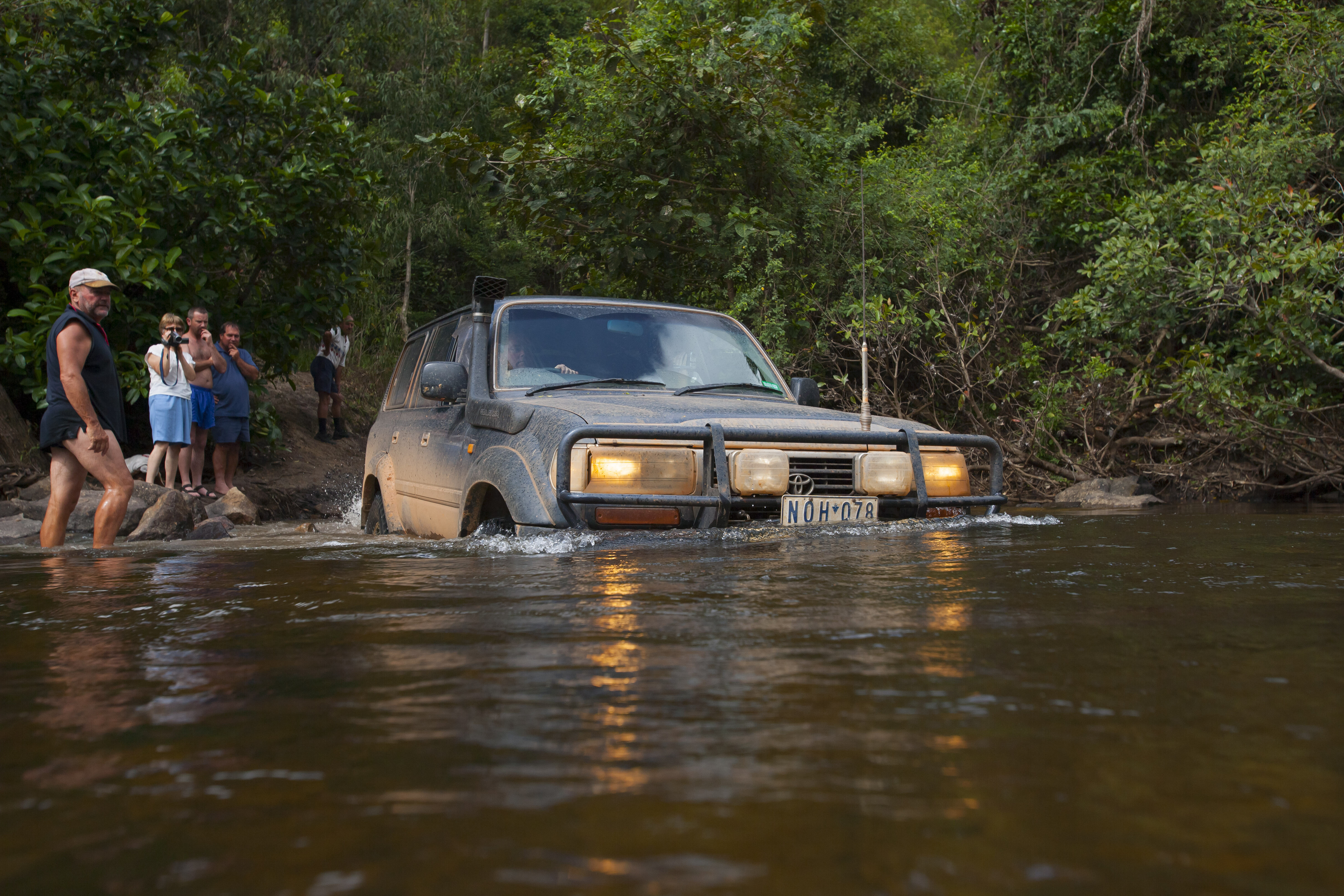
As a result they will want to suck in the surrounding water, which will contaminate the oil inside. These components are fitted with breathers, usually with one-way valves, to prevent water ingress, but if the pressure difference is great enough, water can still get into diffs through axle seals, for example, and find its way into other mechanical components.
Another way to equalise the pressure inside and outside of the differentials is to replace the OE one-way valves on the diff breathers with diff-breather extension tubes that are plumbed up high in the engine bay, where water is unlikely to reach. These will usually be fitted with filters that let air in and out but not water. You can also get extension tubes for the gearbox and transfer case.
Breathing easy
It’s imperative that you know what your vehicle’s maximum wading depth is, and that you don’t exceed it. Some 4WDs have a very limited wading depth of around 500mm, which is essentially knee height, while others will claim a wading depth of almost a metre.
Things that have a bearing on wading depth include where the engine air-intake is positioned and its orientation, the height of the alternator in the engine bay and the location of fuse boxes. Regardless of your vehicle’s maximum wading depth, this can be increased by fitting aftermarket equipment including a quality snorkel.
A snorkel raises the vehicle’s engine air-intake to prevent the engine from ingesting water. This is of vital importance because if water gets past the air filter and into the engine, it can at best cause the fire to go out (stall the engine) leaving you stranded in the middle of the water crossing.

Even worse, it can cause the engine to suffer from hydraulic lock, which is when water gets into the cylinders, and as the pistons go up and down they try to compress that non-compressible water, usually resulting in bent conrods and terminal engine failure.
Bear in mind that some snorkels are better than others. What looks like a standard OE snorkel on a 70 Series LandCruiser, for example, is actually described by Toyota as a raised air-intake, and it has many joins with gaps where water can get in. A good-quality snorkel, on the other hand, has airtight fittings so water can’t be sucked into the engine, and it will also be designed so that it won’t restrict airflow that could impact engine performance and fuel economy.
Another handy piece of equipment when tackling water crossings is a radiator blind that can be fitted to the front of your vehicle, and this can either be a well-secured tarpaulin or a tailor-made aftermarket design. A radiator blind, as its name suggests, is designed to direct water flow around the engine rather than through the radiator and into the engine bay.
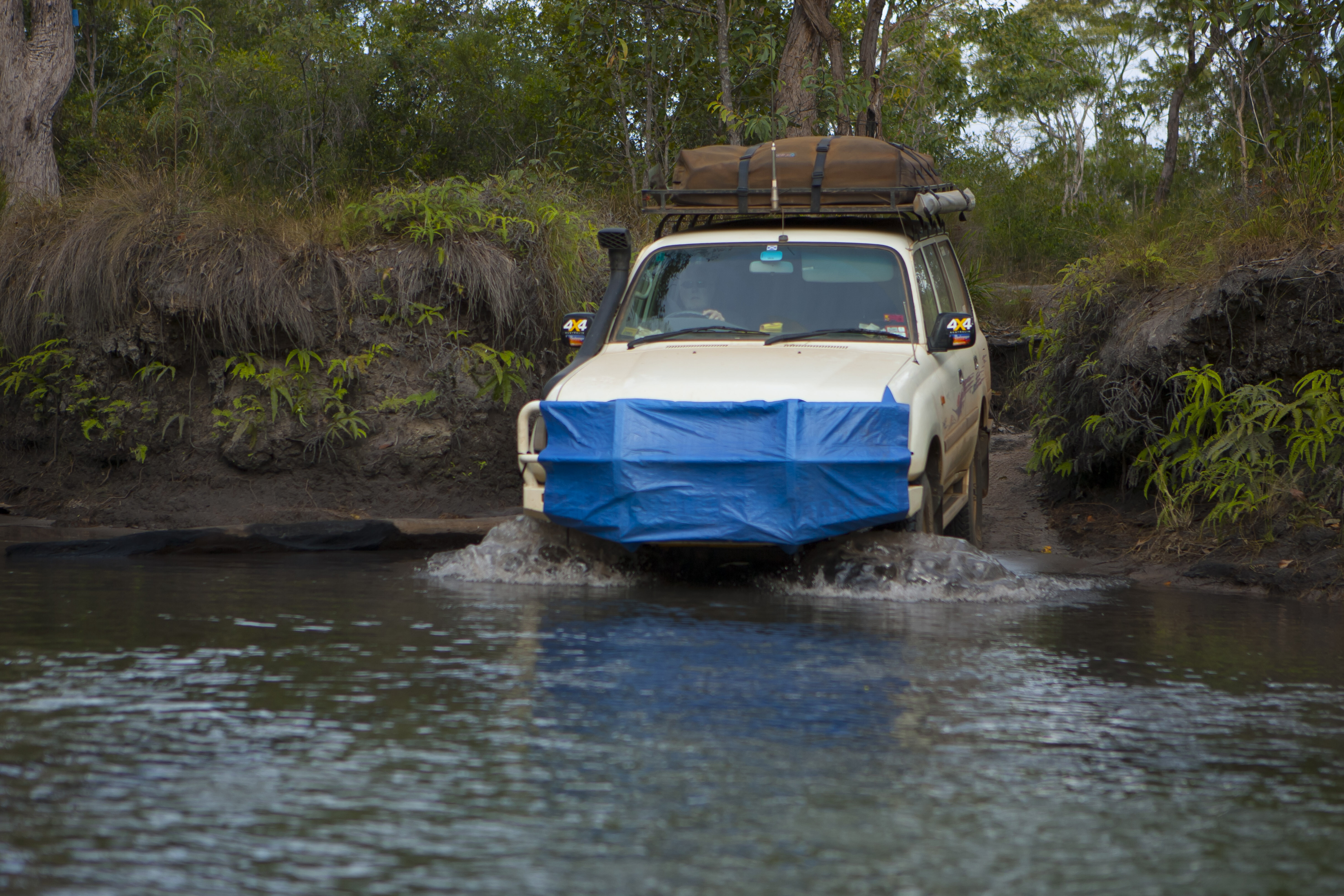
If water passes through the radiator, it can cause the nylon blades on an engine’s spinning cooling fan to bend forward and cut through the radiator’s cooling fins, potentially resulting in a loss of coolant. Water that passes through the radiator and into the engine bay can also get into electrical components, resulting in the engine stalling.
If your engine stalls in the middle of a water crossing, it’s best to attempt to recover the vehicle rather than trying to get the engine going again in case water has made its way through the induction system and into the cylinders. If it has, you will need to remove the sparkplugs (petrol engines) or injectors (diesel engines) before cranking the engine over to pump the water out.
No matter whether you use a tarp or a dedicated radiator blind, always make sure it is properly secured to your vehicle and that you remember to remove it after you’ve driven out of the water on the other side.
Vehicle set-up
So, you’ve checked the water depth and the flow rate, you know where the obstacles are, and the entry and exit points are all okay, but before you drive into the water make sure your vehicle settings are appropriate to give you the best chance of getting across.
Firstly, make sure the driver’s window is down. If you get stuck in the middle of the crossing and your vehicle’s electrical system fails, you might need to climb out the window. Secondly, a liberal spray of a water dispersant (such as WD-40) on electrical connections, both under the bonnet and on your winch, is a helpful defence against water ingress.
Selecting the right ratio in the gearbox is imperative; second gear in low-range is ideal for most water crossings, as this will allow you to drive fast enough to create a bow wave at the front of the vehicle to stop water from flooding the engine bay, but slow enough that you don’t end up with water washing over the bonnet and halfway up the windscreen.
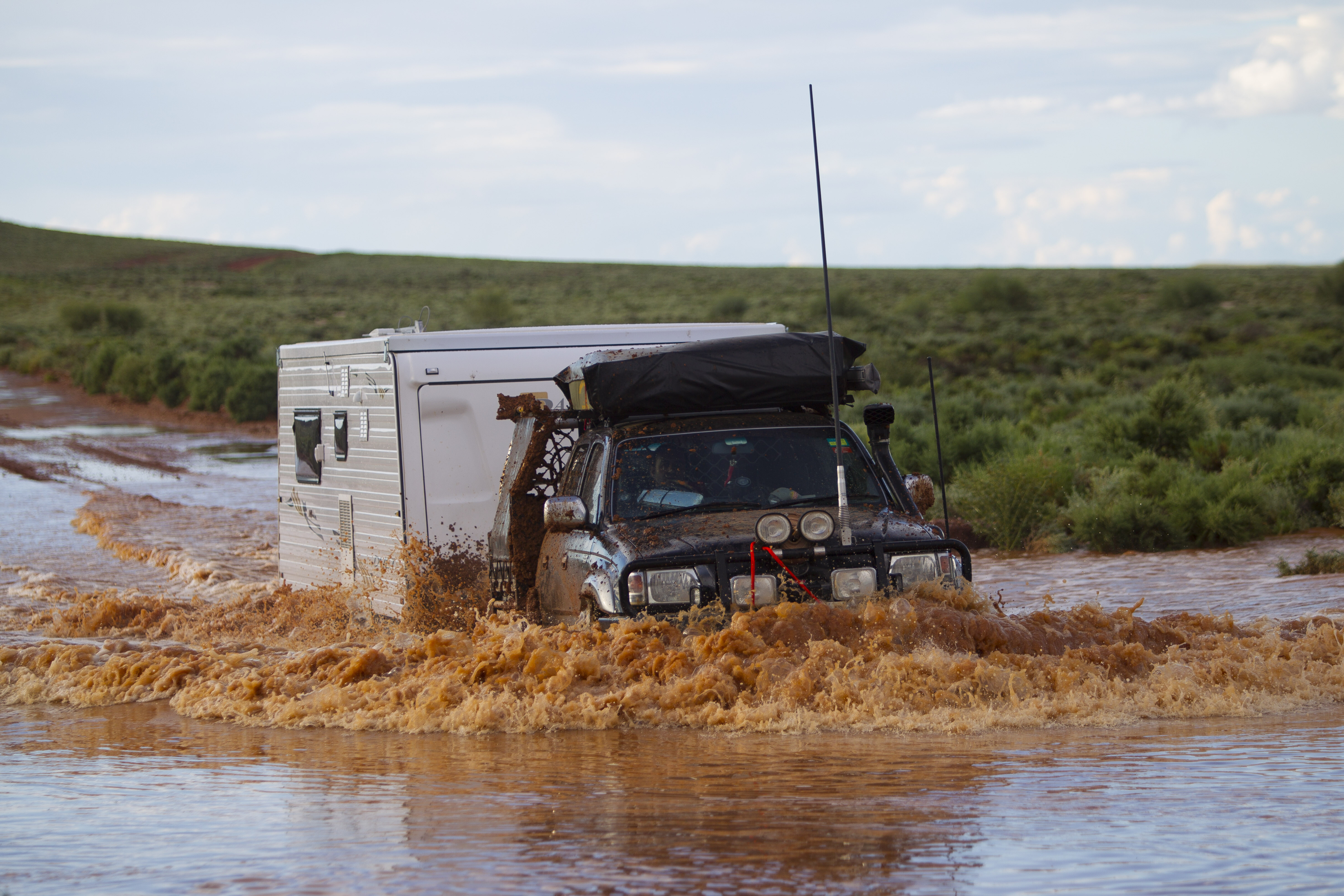
If your vehicle is equipped with locking differentials, engage them before entering the water so you have the maximum available traction. If your vehicle is equipped with different drive modes for different terrain types, select the one that best suits the conditions. If the water crossing has a rocky base, select ‘Rock’ mode for example, or if it has a muddy base select ‘Mud & Ruts’. Some vehicles will have a ‘Water Fording’ mode, and if that applies to your rig, use it.
Finally, have a look around for anchor points that you can use to recover your vehicle if something goes wrong, such as sturdy trees. Your vehicle should be fitted with rated recovery points front and rear, and you should have your recovery gear ready to go and in an easy-to-access spot.
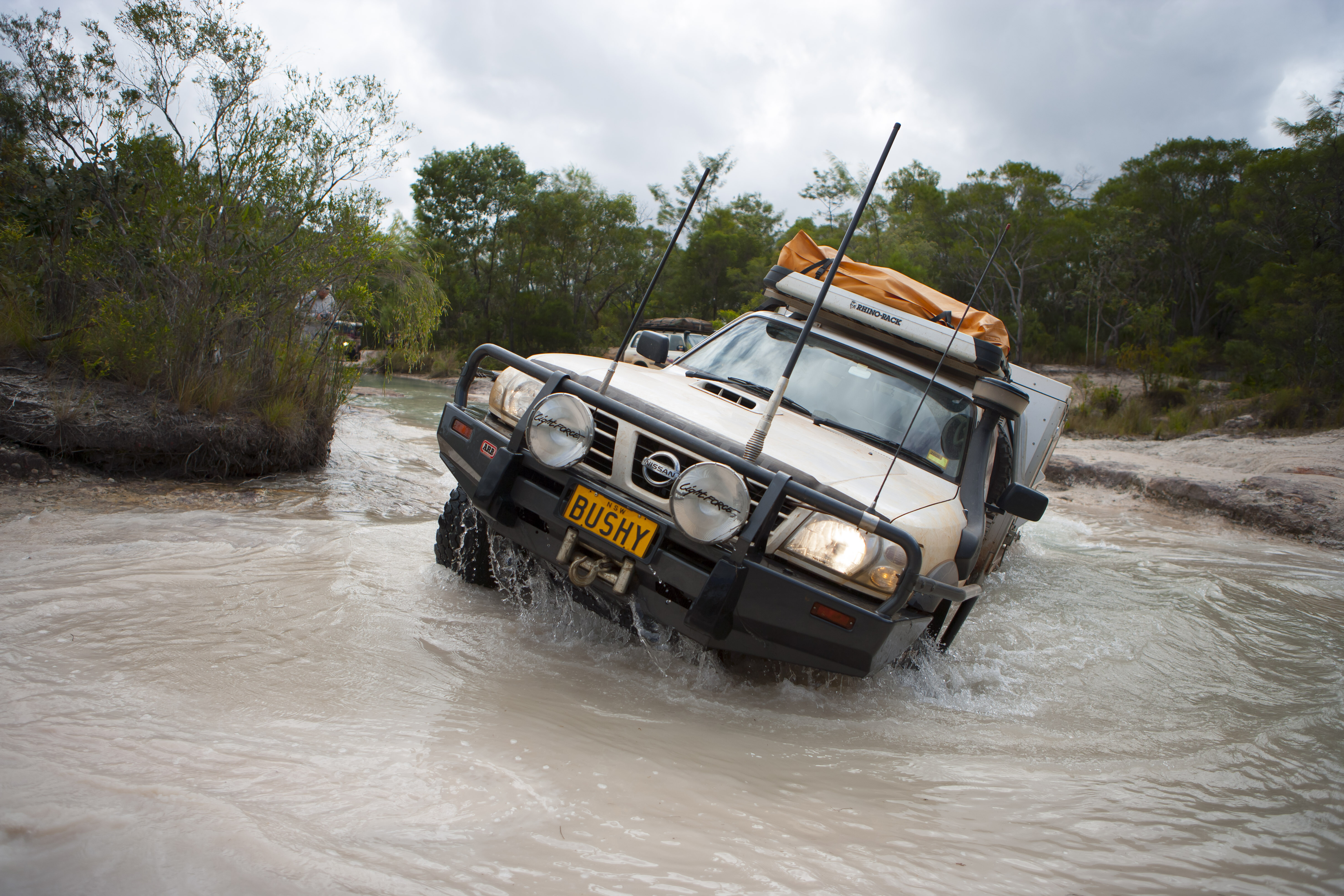
If you are travelling with other vehicles, make sure there is only one vehicle in the water at any one time, and have other vehicles suitably positioned to help in a recovery situation if required.
If you’re travelling solo, a winch is an invaluable piece of equipment if you become stuck, but bear in mind that electric winches can sometimes fail when submerged, so you need to be prepared for all eventualities. A Tirfor (hand winch) is a good back-up.
Steady as she goes
Drive into the water with caution, particularly if there is a steep entry point, but with enough momentum to prevent you from becoming stuck from the get-go.
As you drive through the water make sure you stick to your planned route so that you avoid any obstacles and deep holes that you spotted when examining the water crossing. You may need to make some steering adjustments as you go, particularly if the water is flowing fast enough to change the attitude of the vehicle. If there are other people with you, and they have a UHF radio, they can direct you from the bank to help you avoid obstacles that you might not be able to spot from behind the wheel.
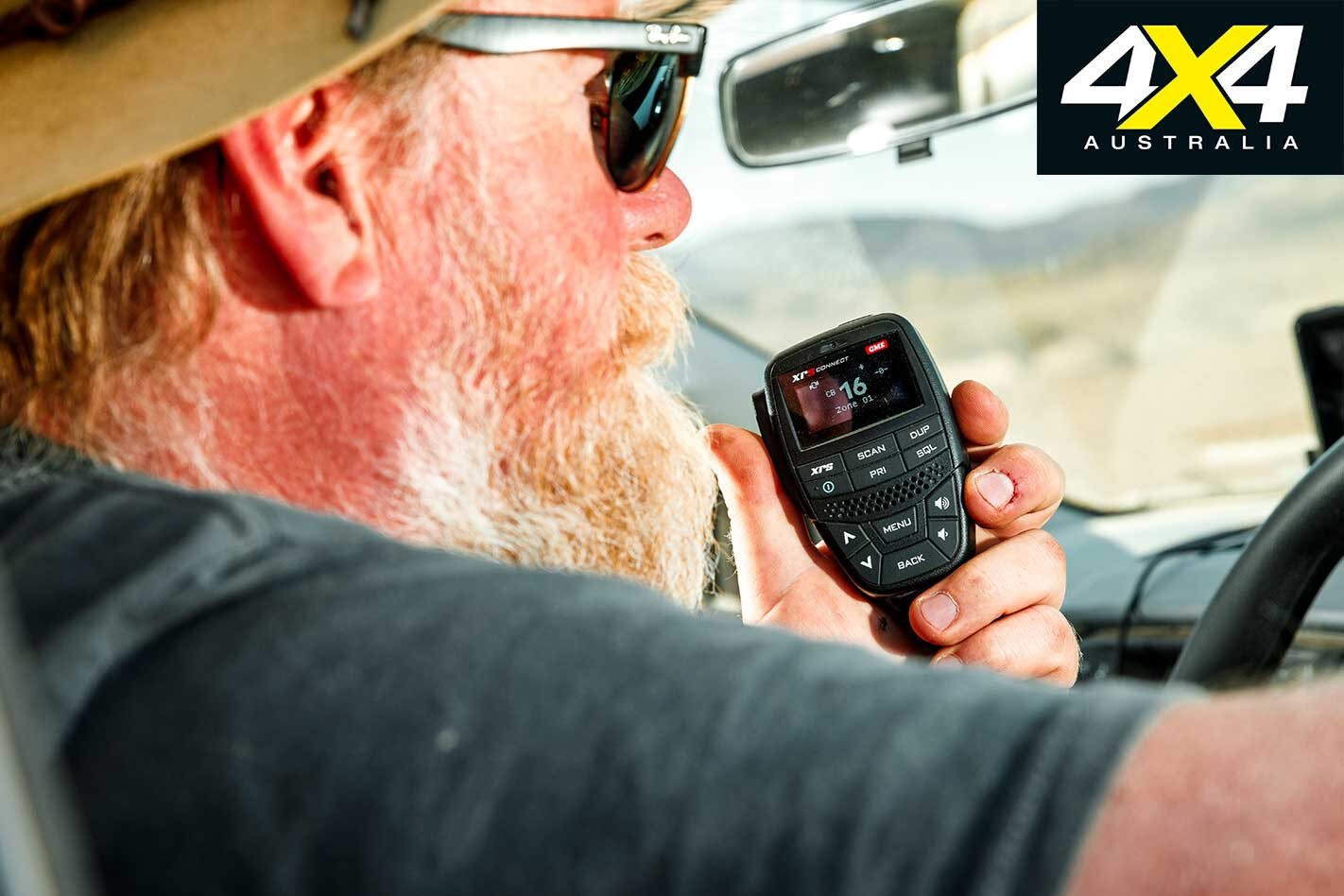
Keep your speed as steady as possible; you want to be going fast enough to create a bow wave at the front of the vehicle but not so fast that water is splashing up over the bonnet. Whatever you do, don’t stop in the middle of the crossing; keep driving forwards until you are safely at the bank on the other side. If possible, try to avoid gear changes in vehicles with a manual transmission, as this can result in the vehicle losing momentum.
If the exit of the water crossing is slippery due to dirt, grass or mud, stop if it is safe to do so before driving up the track to let water drain from your vehicle. This will limit track degradation, making it easier for following vehicles to exit the water crossing. Bear in mind that this won’t always be possible, as you might need to maintain momentum on some steep exit points.
You’ve made it
Once you are safely across to the other side, disengage diff locks and set the transfer case and drive mode to suit the upcoming track conditions. While you are removing the radiator blind, have a good look around and under your vehicle to check for any damage and to ensure there are no foreign objects stuck anywhere. Also check the lights all around your vehicle, to make sure they don’t have water in them.
If your vehicle is running okay, you can continue on your way, but give the brake pedal a couple of pumps to ensure the brakes have dried out and are working fine. If the engine is running rough, check to see if the air filter is dry and, if not, dry it out before continuing.

If water has made its way past the air filter, it may have reached the mass-airflow sensor (MAF), which can result in a modern vehicle engine entering limp-home mode; you can sometimes dry the MAF by blowing it with compressed air, but be careful not to damage it.
Have a look at the radiator to make sure there is no obvious damage or leaks, and take a peek in fuse boxes to make sure they are dry. Check the engine and transmission oil, too, to make sure it hasn’t been contaminated with water. Diff oil should also be checked once you’re back home. Also, have a feel around the footwell area to make sure the carpet is dry, and air it out if necessary.
Finally, don’t take water crossings for granted, no matter how familiar you think you are with them. They are not static obstacles and by their very nature are always changing, so err on the side of caution.
Water ingress
I would always have to remove my boots when tackling water crossings in my old Land Rover Defender because the door seals were so bad that water would be sloshing around in the footwell.
While most modern vehicles have watertight door seals, a lot of utes don’t have any seal at all around the tailgate, and if the crossing is deep enough your gear in the tub will soon get awfully wet.
Luckily, there are dust and water seal kits on the market specifically designed to suit most makes and models of ute, and they are easy to fit.
What to do
- Check crossing before diving in.
- Fit a snorkel, diff breathers, and radiator blind.
- Let the vehicle cool down.
- Have recovery gear ready to go.
- Correct gear, drive mode and steady pace.
What not to do
- Dive in without checking the crossing.
- Drive too fast.
- Change gears halfway across.
- Drive away without checking over the vehicle.
- Forget to remove the radiator blind.
We recommend
-
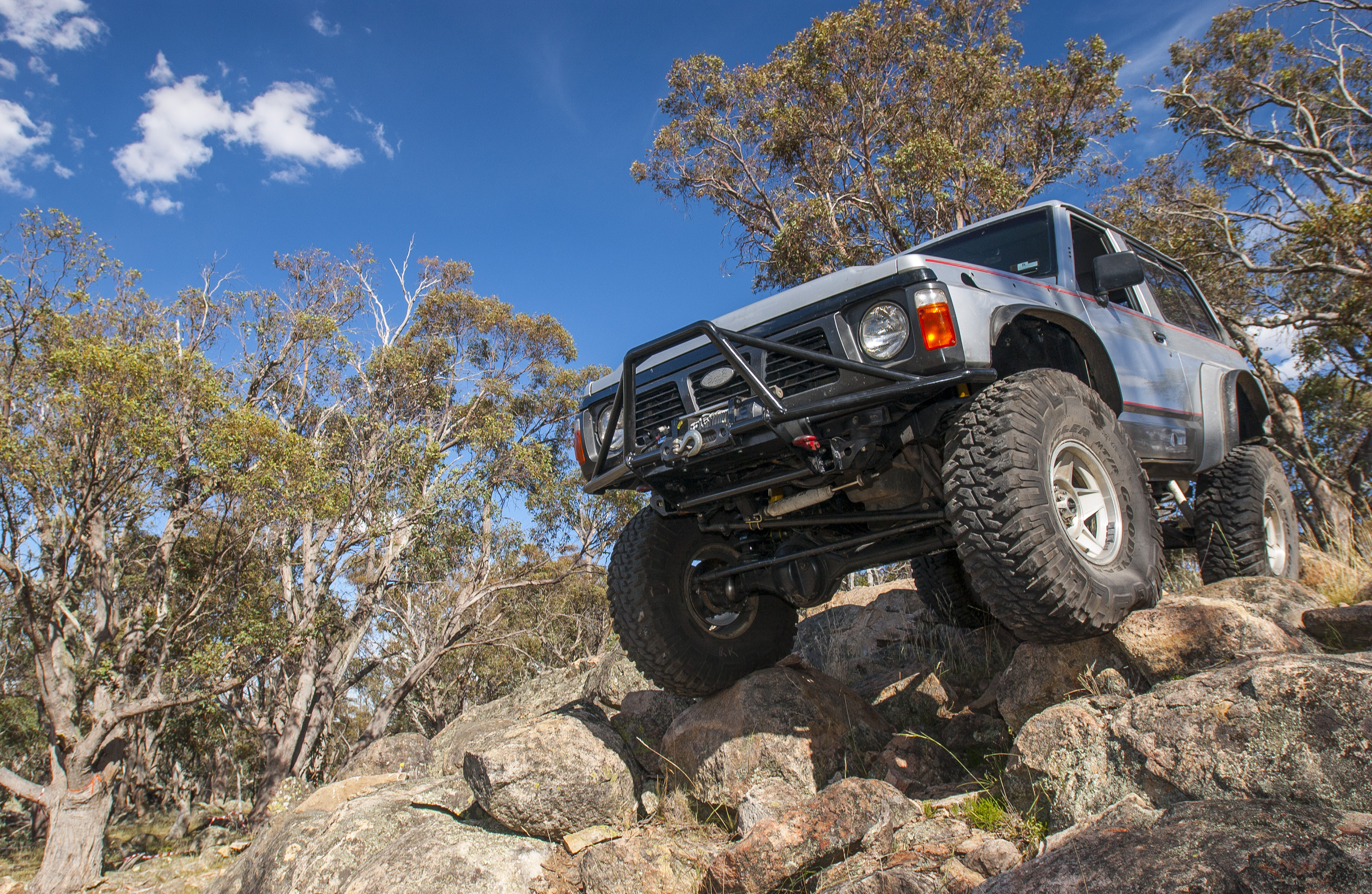 Gear
GearRock crawling: How to tame rocky terrain
The best techniques to safely and successfully drive over rocky terrain
-
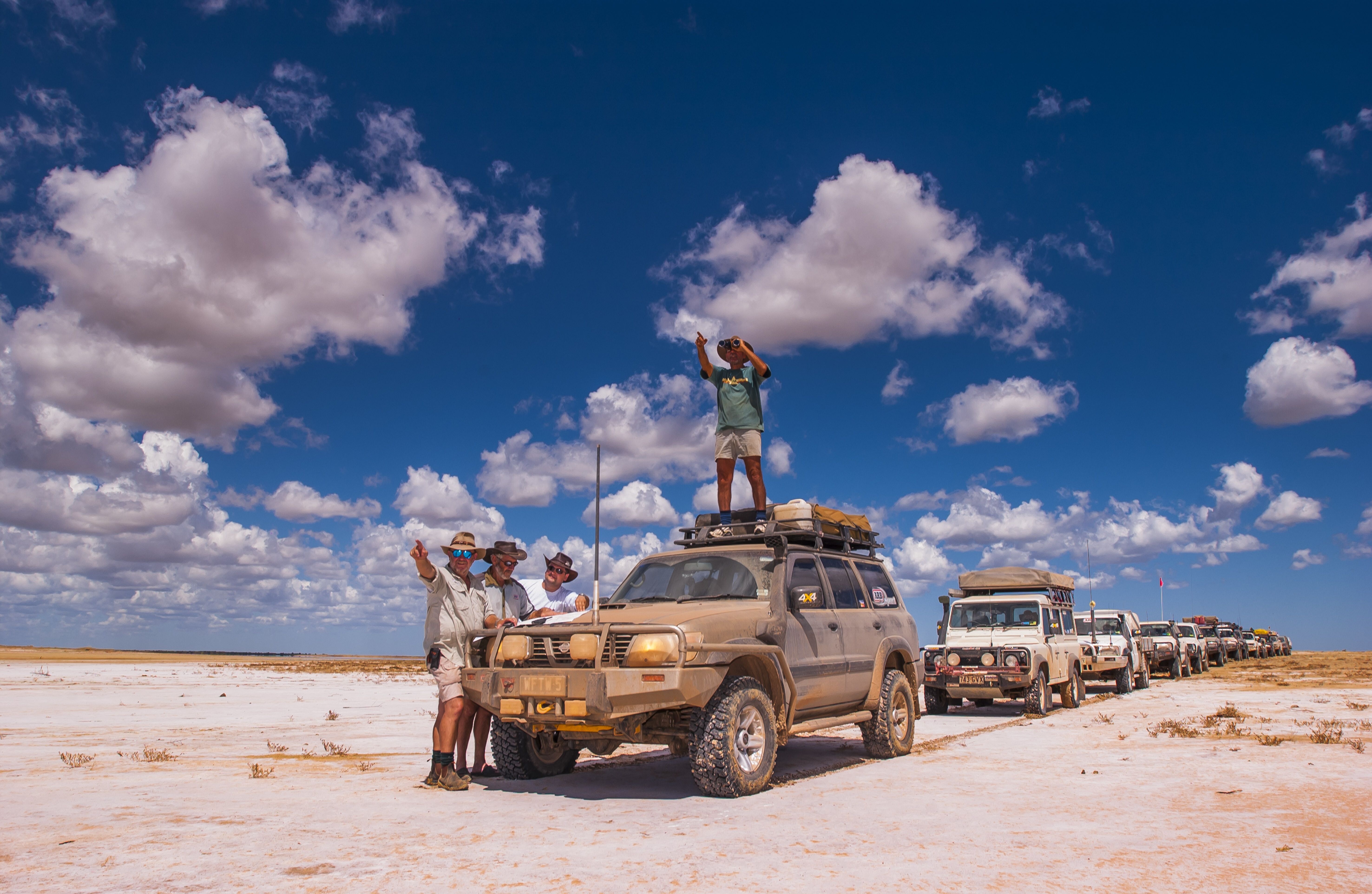 Gear
GearHow to drive in a convoy
We look at best practice when it comes to driving in convoys – the why, the how and what equipment you’ll need to keep a group of travellers safe and prevent anyone from getting lost
-
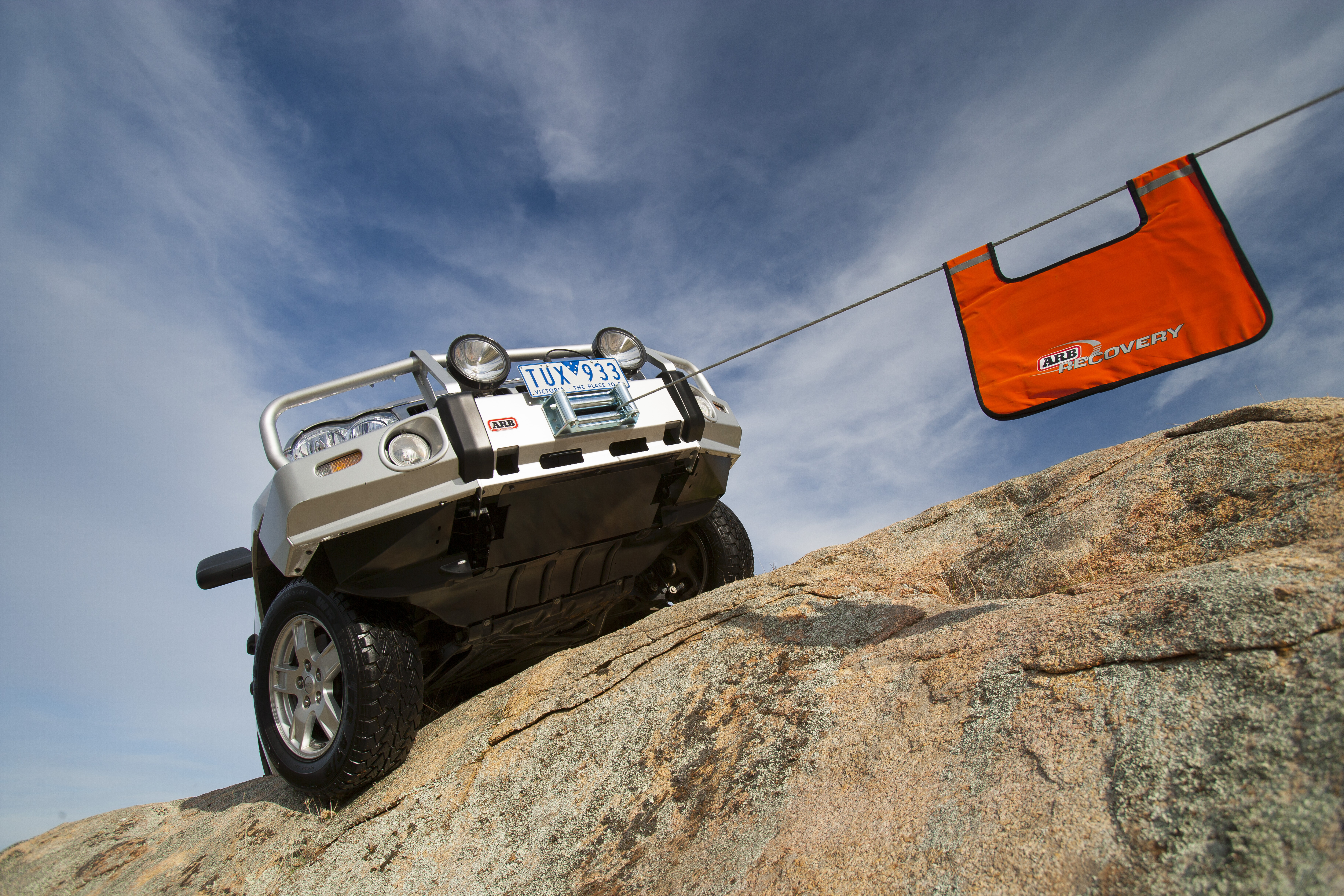 Gear
GearHow to perform a winch recovery
How to use an electric winch to perform a basic vehicle recovery

